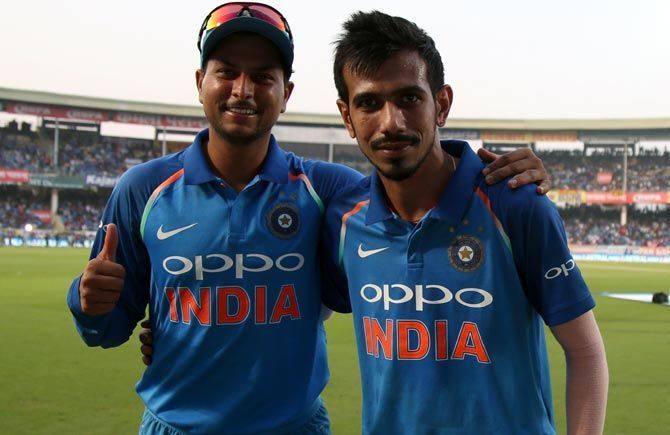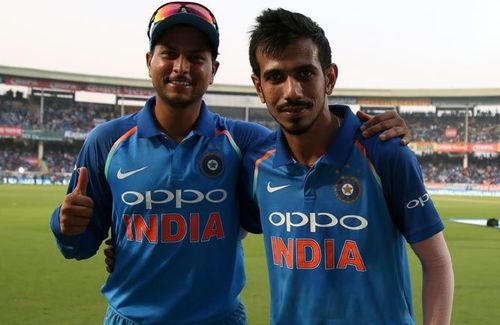
Wrist Spinners are the need of the hour in Limited Overs Cricket
Ravichandran Ashwin, one of the best off-spinners at the moment, has decided to add leg-spin to his armory. What prompted someone like Ashwin, who is so successful with his offies and variations to turn to wrist spin at this stage of his career?
The answer lies in the success of wrist spinners in limited overs cricket over the past couple of years, and more so the success of Kuldeep and Chahal, which has kept Ashwin and Jadeja out of contention for limited overs cricket. Wrist spinners have always been exciting prospects. They will go for a few big hits, will be taken to cleaners, but they assure wickets.
ODI cricket is no more the same that it used to be, especially with the style of cricket the likes of England have been playing. Carefully seeing out the middle overs to slog at the death is no more the mantra in ODIs. Gone are those days when offies and left armers used to contain the batsmen well in the middle overs. Batsmen nowadays look to attack throughout the innings. This brings wrist spinners into the picture, and the ability to pick up wickets in the middle overs helps teams to restrict oppositions to gettable totals.
Another thing in favour of wrist spinners is the kind of pitches being prepared for limited overs cricket. Almost everywhere pitches are being prepared which suit the batsmen more. And wrist spinners, unlike finger spinners, do not depend on the pitch. They can get turn anywhere in the world, even on the flattest of pitches. The rise of Rashid Khan, Kuldeep Yadav and Yuzvendra Chahal is proof of the above. These bowlers have been successful in whatever conditions they have played so far. The likes of Tahir and Adil Rashid can also be seen among the wickets almost every game they play.

Batsmen all over the world have issues against wrist spin. At present the teams which possess good wrist spinners and the teams who tackle them well are the ones succeeding in limited overs cricket. India, South Africa, England, Pakistan, Afghanistan all posses atleast 1 good leggie in their playing XIs. Australia and New Zealand have leggies too in the form of Zampa and Sodhi, but they are yet to stamp their authority.
So in short, the nature of pitches, accompanied by the modified approach of batsmen has contributed to the increase in the need of good wrist spinners.
Looking at the current trend, in all probability, wrist spinners are going to play a key role in the 2019 World Cup in England. The teams with good leggies are certain to bamboozle oppositions, a trick which India missed in the Champions Trophy. The 2018 IPL auctions also showed the increase in demands of the leg spinners, where teams were ready to spend big to rope in the leggies.
A new revolution is taking place in limited overs cricket. Just like batting in the initial overs by Sri Lanka in 90s, wrist spinners in the middle overs by India and Afghanistan today is a revolution that is going to change the way the game is played.